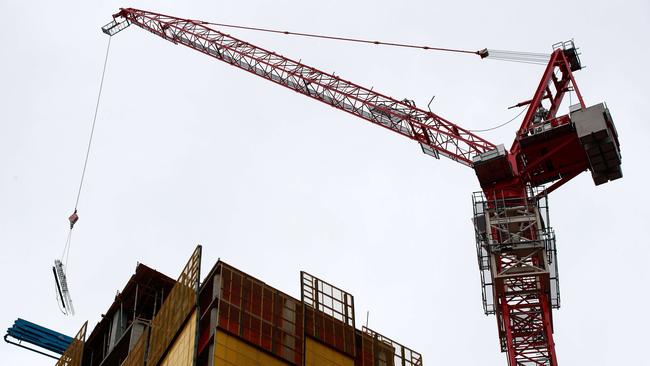Lending squeeze to be catalyst for apartment market correction: CLSA
An apartment market correction could lead to a sharp drop in home prices and recession, says a report’s “worst-case” scenario.

A pullback in bank lending to foreigners and apartment buyers will be the catalyst for a correction in the oversupplied market, leading to higher defaults among developers and a “sharp contraction” in construction, according to a new major report.
As stockmarket investors express increasing concerns about the nation’s apartment glut, broker CLSA today told clients that there continued to be a “squeeze from lenders” as less capital poured in from China.
“Our base case has the crisis starting with cheap apartments and later spreading to other flats in close proximity. This is likely to lead to defaults among small developers and a sharp contraction in apartment construction,” CLSA said.
“However, it is unlikely to result in sharp price declines in other regions. (But) our worst-case scenario would result in dwelling prices falling sharply in all areas, eventually leading to a recession.”
CLSA’s team, including banking analyst Brian Johnson, said the correction would start with “low-quality” apartments struggling to settle and more expensive flats in those areas “will not be immune”.
They concluded Commonwealth Bank, Lend Lease and Mirvac Group were most exposed to their “base case” forecast.
“Construction will follow prices, so we expect apartment building to be hardest hit over the next five years. Our recession scenario is likely to require price contagion to extend to other regions and include houses, with household debt at 122 per cent of GDP and price-to-income ratios of up to 12 times increasing this risk,” they said.
The analysis builds on fears from regulators the Reserve Bank and The Australian Prudential Regulation Authority that the glut of apartments in many cities, particularly Brisbane and Melbourne, will lead to settlement problems and losses for developers.
Sydney is also worrying officials, with NSW driving a sharp spike in building approvals in July on the back of a booming amount of apartments being signed off, the Australian Bureau of Statistics said this week.
Citi economists last week warned that this housing cycle was “different” to previous ones where rising interest rates cooled the market.
“It will be oversupply rather than interest rates that ultimately will bring this housing cycle to an end,” Citi concluded.
Speaking at a conference in Sydney this week, APRA chairman Wayne Byres said the regulator had recently “dialled up the intensity” of its focus on commercial property lending, including collecting banks’ data, assessing lending policies and providing feedback on how aggressive they were relative to rivals.
“It’s natural at this part of the cycle that supervisors are going to pay particular attention,” he said, noting commercial property losses were the cause of previous banking and economic downturns such as the early 1990s recession.
Total bank commitments, both drawn and undrawn, to commercial property grew 10.8 per cent in the year to June to $216.1 billion, the highest level since the global financial crisis, according to UBS
It has coincided with record residential approvals of 235,000 in the past 12 months, of which 73,000 approvals have been in apartment buildings four-or-more storeys high, which was “consistent with the 525 residential construction cranes which now tower over Sydney, Melbourne and Brisbane”, UBS claimed today.
But using APRA’s data, UBS analyst Jonathan Mott found foreign banks had funded a lot of the developments in the past six months, boosting their exposures 42 per cent in the year to June versus the big four domestic banks’ 8 per cent growth.
He calculated that foreign banks had grown credit exposures for “other residential commercial property” -- a lot of which is financing high rise apartments — from $2.4bn in December 2015 to $4.1bn in June as the domestic banks stepped back from the space.
He told clients that while the pullback in lending for high-rise apartments by Commonwealth Bank, Westpac, ANZ and NAB was pleasing, the rapid increase in housing supply was a “significant risk” for the banks.
According to CLSA’s “worst-case scenario”, falling apartment prices in certain areas would spread and ultimately impact house prices, exacerbated by the high level of household debt and poor housing affordability. “We would expect housing construction to follow prices, resulting in lower employment; it is particularly problematic if we see a sharp reduction in the building of single-family houses,” they said.
“And falling house prices will also affect GDP via the so called wealth effect, where consumers spend less when house prices fall. This scenario would result in dwelling prices falling sharply in all areas, eventually leading to a recession.”



